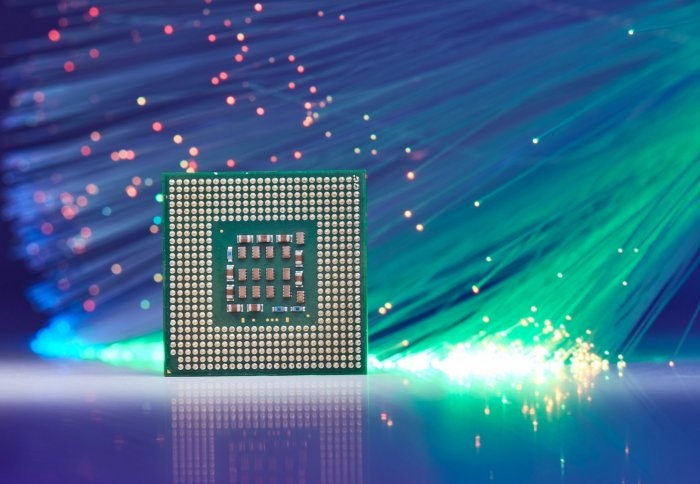Dec 1 2017
Researchers have paved the way for computers that run on light rather than electronics by forcing light to pass through a smaller gap than ever before.
 Credit: Imperial College London.
Credit: Imperial College London.
Light is advantageous for use in computing because it can move a higher density of information and is faster and more efficient than traditional electronics. However, light does not interact easily with itself, therefore, while it can be used to carry information quickly, it is not extremely good at processing information.
For instance, light is currently used to carry information over long distances, such as in fiber optics and transatlantic cables, which provide fast internet. However, as soon as the information reaches the computer, electronics are required to convert and process it.
Several important obstacles have to be overcome in order to use light for processing on microchips. For instance, light can be made to interact employing particular materials, but only over comparatively long distances. However, a team of researchers from Imperial College London has now made an important step forward by minimizing the distance over which light can interact by 10,000 fold.
This means that what earlier would have taken centimeters to attain can now be achieved on the micrometer (one millionth of a meter) scale and bring optical processing into the range of electrical transistors that currently power personal computers. The study results are published in the Science journal on November 30, 2017.
This research has ticked one of the boxes needed for optical computing. Because light does not easily interact with itself, information sent using light must be converted into an electronic signal, and then back into light. Our technology allows processing to be achieved purely with light.
Dr Michael Nielsen, from the Department of Physics at Imperial
Shorter distance, increased intensity
Typically when two light beams intersect each other, the individual photons do not interact or modify each other, as two electrons do when they meet. Particular nonlinear optical materials can make photons interact; however, the effect is normally very weak. This means that a long span of the material is required to accumulate the effect gradually and make it useful.
However, the Imperial team increased the intensity of light by squeezing it into a channel that is only 25 nanometers (25 billionths of a meter) wide. This allowed the photons to interact very strongly over a short distance, altering the property of the light that come out from the other end of the channel that's one-micrometer long.
Controlling light on such a small scale is a vital step in the construction of computers that employ light rather than electronics. Electronic computing is at the limit of efficiency; although it is possible to make a quicker electronic processor, the energy cost of shifting memory data around the computer any faster is very high.
Processors are made smaller to make computers more powerful, so more can be fitted into the same space without increasing the processing speed. Optical processing can produce little to no heat, meaning using light can make computers extremely faster and more efficient.
Bringing optics closer to home
The team attained the effect by employing a metal channel to focus the light inside a polymer earlier examined for use in solar panels. Compared to conventional transparent materials, metals are more efficient at focusing light, and are employed to direct electrical signals as well.
Therefore, the new technology is not only more efficient, but it can also be integrated with existing electronics.
Dr Rupert Oulton, from the Department of Physics at Imperial stated: “The use of light to transfer information has gotten closer to our homes.
"It was first used in transatlantic cables, where capacity was most crucial, but now fibre optic broadband is being installed in more and more streets in the UK. As our hunger for more data increases, optics will need to come into the home, and eventually inside our computers.”
In addition to providing a vital step towards optical computing, the achievement of the team potentially solves a very old problem in nonlinear optics. Since interacting light beams with various colors that pass through a nonlinear optical material at various speeds, they can become ‘out of step’ the desired effect may be lost.
Since the light travels such a short distance, it does not have time to become out of step in the new device. This removes the problem and enables nonlinear optical devices to be more versatile in the kind of optical processing that can be attained.